Santa Cruz'ing
After a wonderful couple of days in Half Moon Bay it was time to set sail to Santa Cruz. We were looking forward to visiting the harbor where Salacia was born — we’ve been to Santa Cruz at the beginning of January for the the last two years to get boat work done. Salacia is the one and only Santa Cruz 53C, built as a re-branding and re-launch of the iconic Santa Cruz 52, by Santa Cruz Yachts, which was itself a relaunch of Bill Lee Yachts, after Bill decided to move on. Bill Lee designed Merlin, a racing yacht which has won numerous offshore yacht races including the Transpac (Transpacific Yacht Race) in 1977, establishing a course record that stood for 20 years. Merlin finished the race in eight days, eleven hours and one minute, beating Windward Passage’s 1971 record by over 22 hours! Salacia was the last boat they made before their business went under during the recession.
We left the slip around 1030 am. We weren’t sure if we were going to get a chance to sail since the wind was very low. We left the harbor and headed out, making sure to stay in the channel to avoid the Colorado Reef, just off the point. It was a beautiful morning with the sun glimmering on the sea. My awareness grew sharp as it usually does when we are out on the water. I tap into a different part of my brain that is wired for survival. As I am scanning the water, I see a crab pot right in front of us. I yell out to Peter who instinctively moved fast to the stern and put the throttle in neutral. Looking out behind us we see the crab pot pop up. Phew that was close.
Crab pots are a big problem for boats going up and down the coast. They can get tangled in propellors. It happened to us on our first trip down to Santa Cruz a couple of years ago. We were motoring at night and about to pass Half Moon Bay when we suddenly heard a big bang. Bam!! We stopped dead in our tracks. We went to the stern and saw the pot bobbing behind us with the line wrapped around our prop. Luckily our propeller folds, to reduce drag in the water while sailing. Peter put it in reverse and then back into forward, which folds the blades back and forth, until eventually the line slid off. I’m not sure we’ll always be that lucky. Sometimes it requires having to cut the line which might mean jumping into the cold water!
As we move past the safe water buoy, we turn the boat to the left and set our course. We are both watching for crab pots and kelp beds. It’s a beautiful day and the sun is glistening on the water. There are different birds floating in groups on the water. As we approach them, they dive down below the surface. We pass small fishing boats and kayaks until there is only us and the coastline and sea life. We begin to get into a rhythm and it’s my favorite part of sailing on the open water. We can begin to relax as we move further away from Half Moon Bay.
After we round Pigeon Point, the wind wraps around to a run1 and picks up to about nine knots. We decide to douse the engine and pull out the jib. We are finally sailing! It’s always a wonderful moment when we shut the engine off. All we hear are the sounds of the water and the birds. We are technically now in Monterey Bay and we are greeted by a large school of seals! They are swimming and eating fish. It’s a wondrous scene.
We are now only a few miles out from the Santa Cruz Harbor and we call in to find out where we will dock. We pull in the jib, put on the motor, and begin to enter the harbor. My job is to put out the fenders and the dock lines. As I’m finishing up the last of the lines, we are inside the harbor and I hear someone on a boat yell out to us, “Well done! Great partnership!”
“Wow,” I think to myself, “What a greeting!” That felt so good to hear because it’s been a long time in the making!
We passed a boat going in the other direction and someone else called out, "nice boat!” As we looked around, there were a number of Santa Cruz Yacht boats all over the harbor! These were all Salacia’s cousins and some sisters and brothers! In fact we docked right next to one. We love Santa Cruz harbor. It’s like coming home.
Please let us know what you’d like to see and read in the comments! If you have questions, we’ll do our best to answer them, either in the comments or in an upcoming post.
Running is when the boat is headed nearly directly downwind, so the wind is behind the boat.


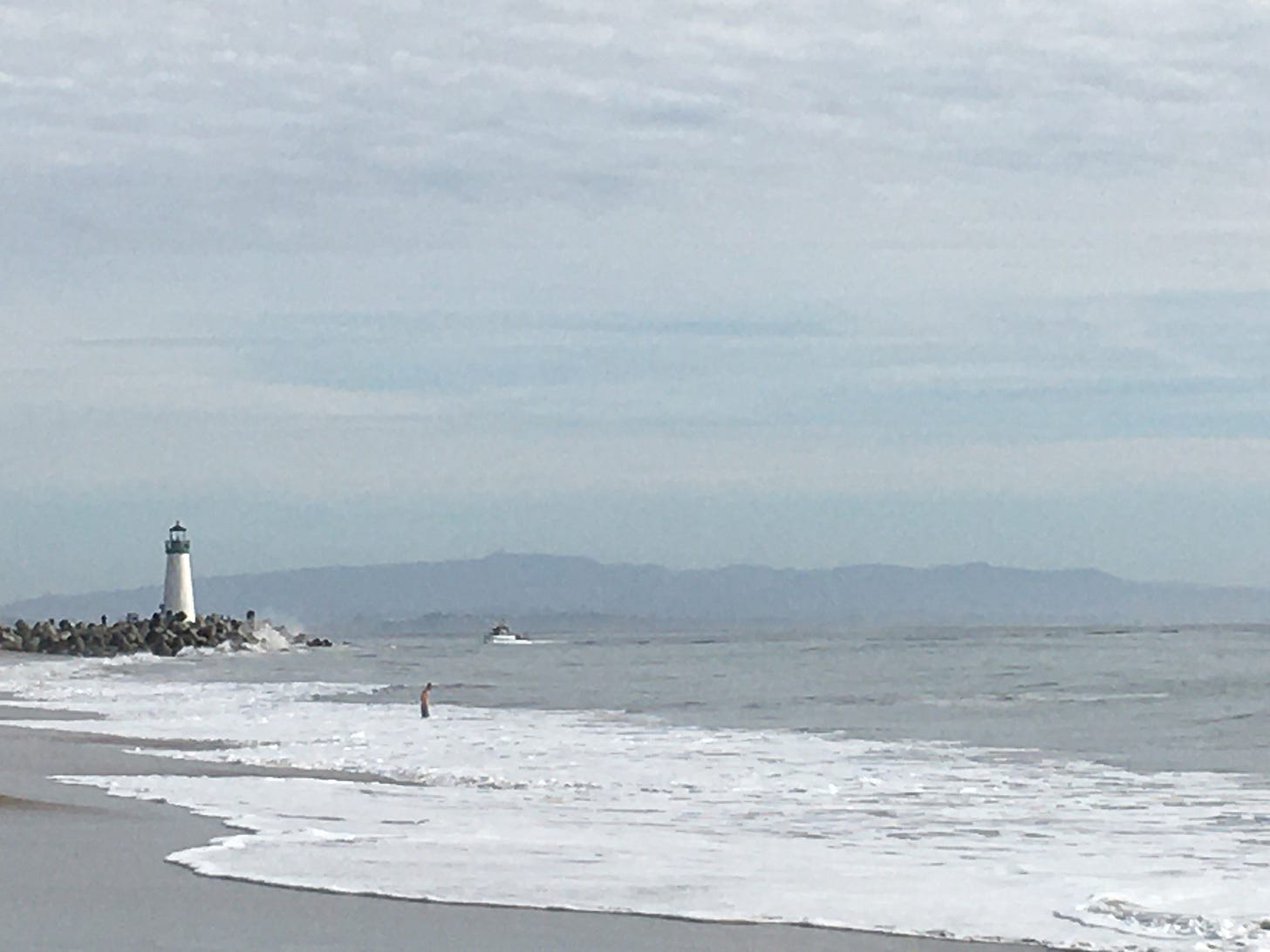
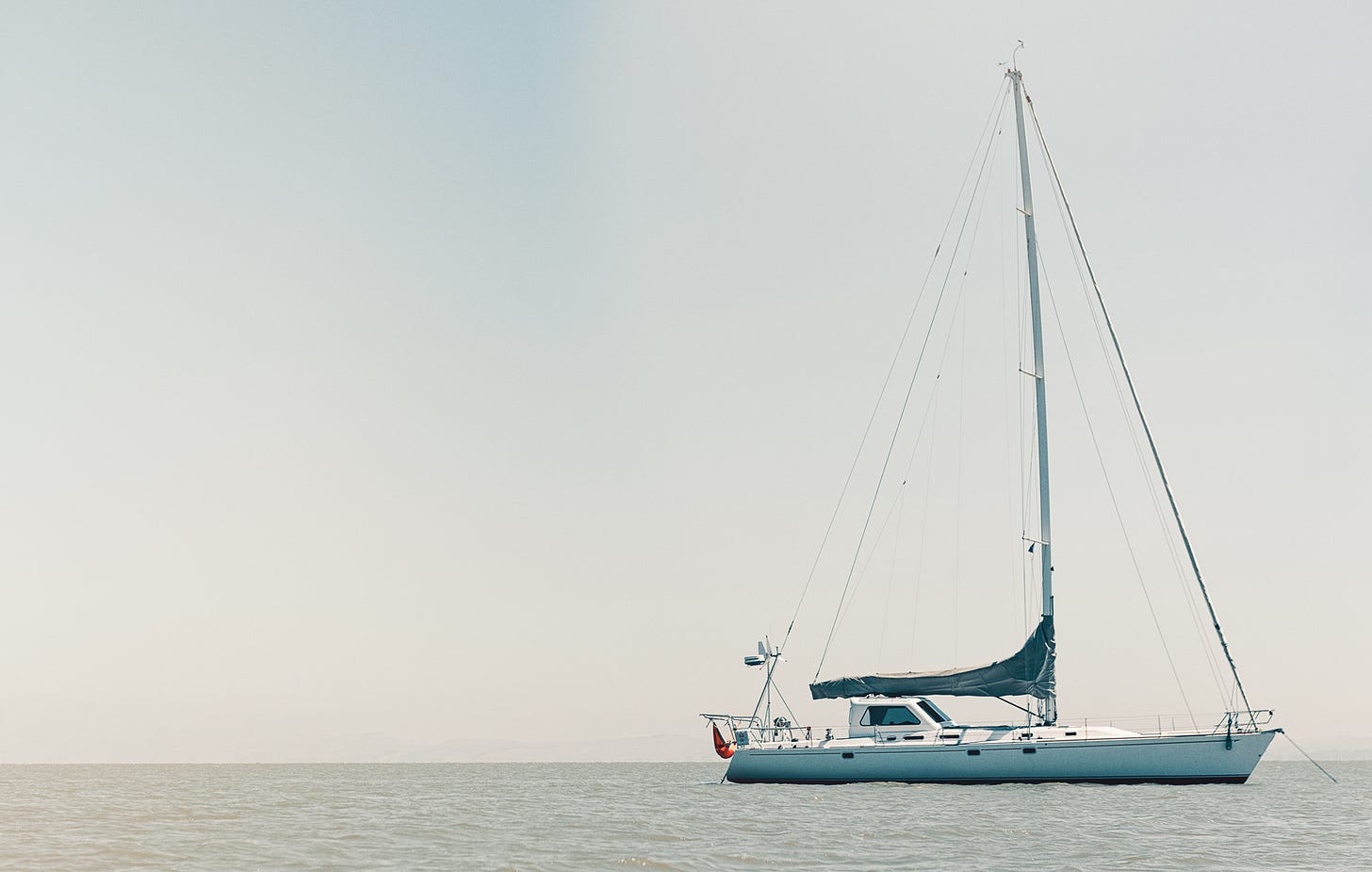
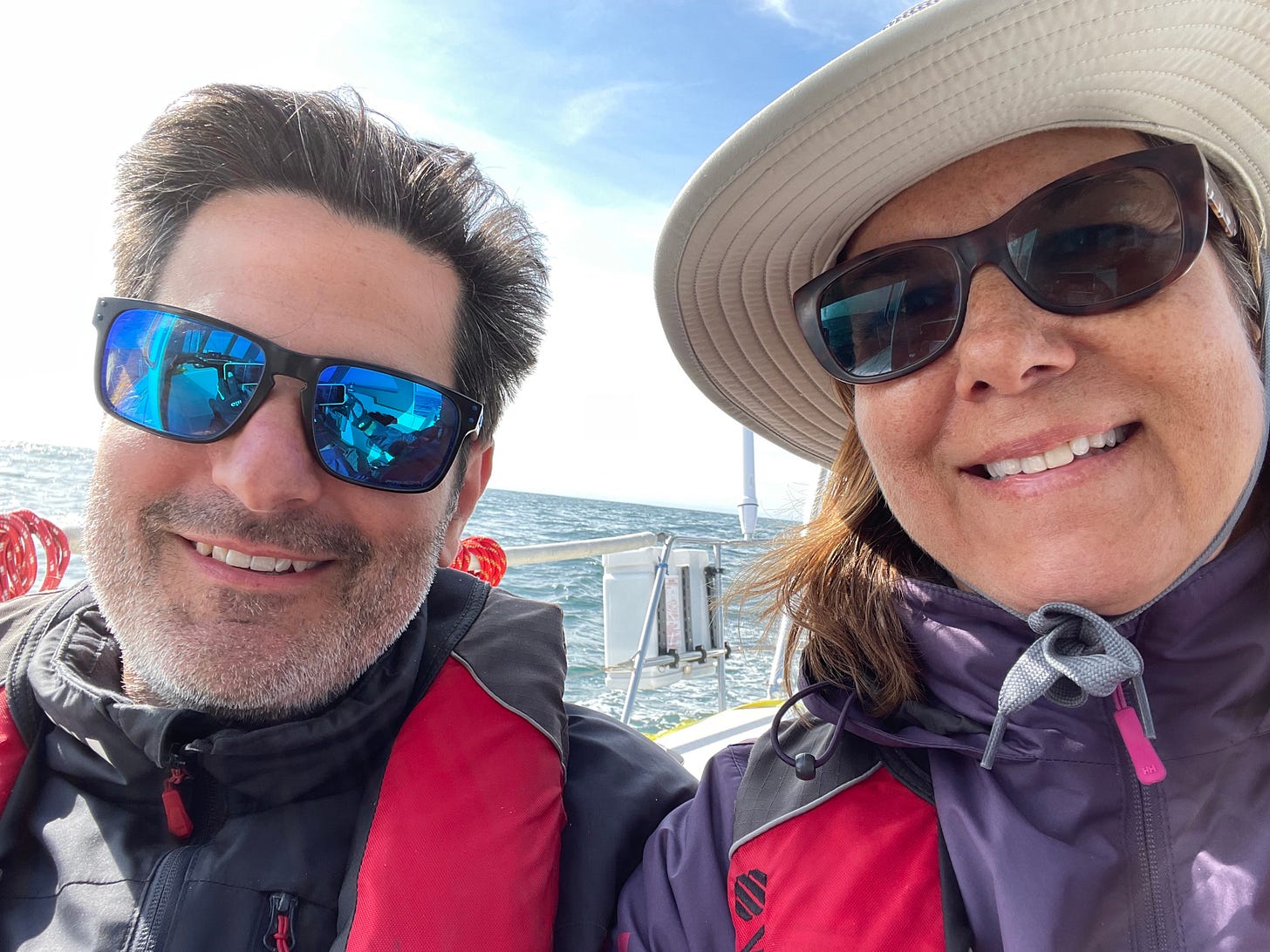
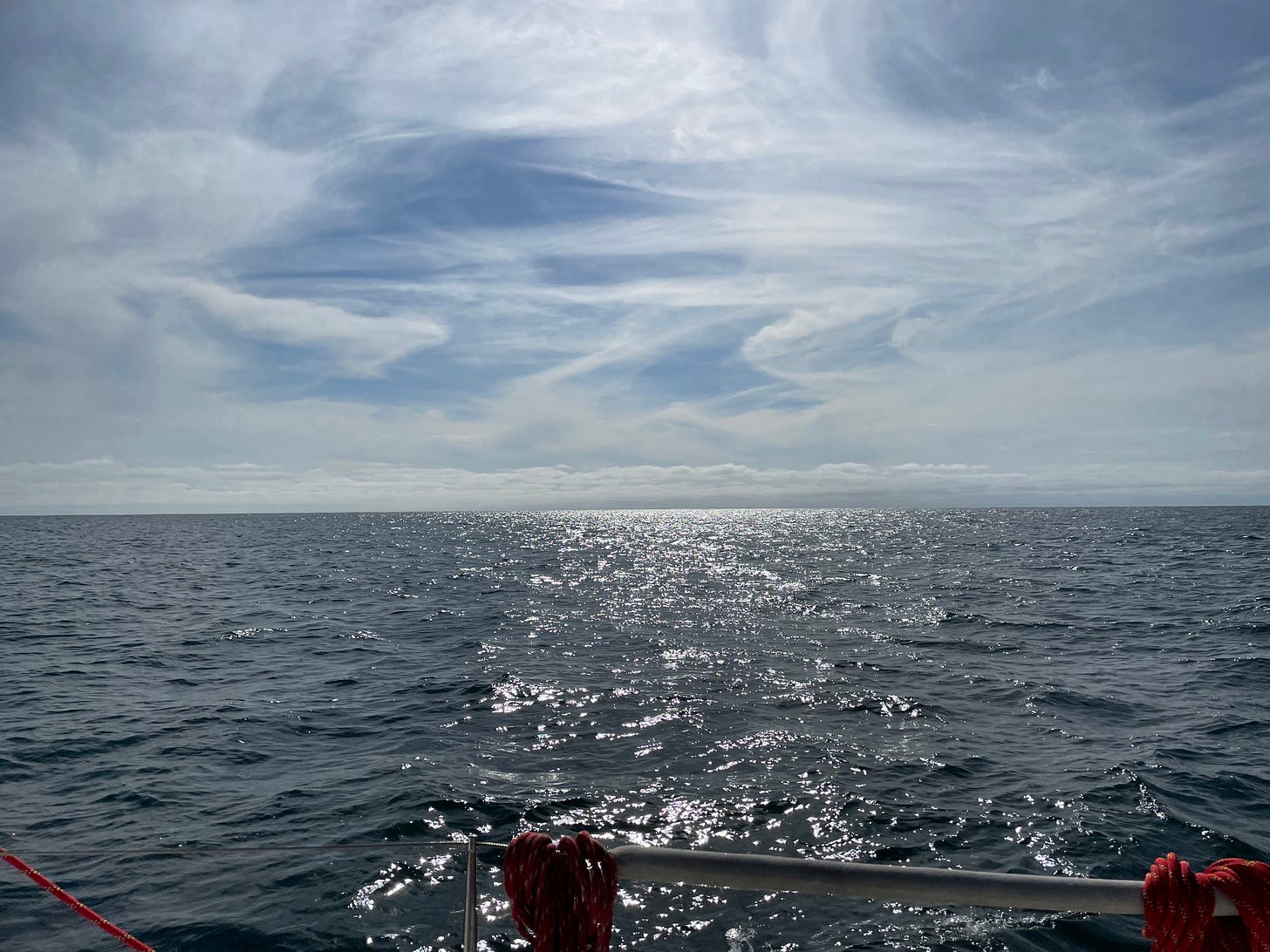
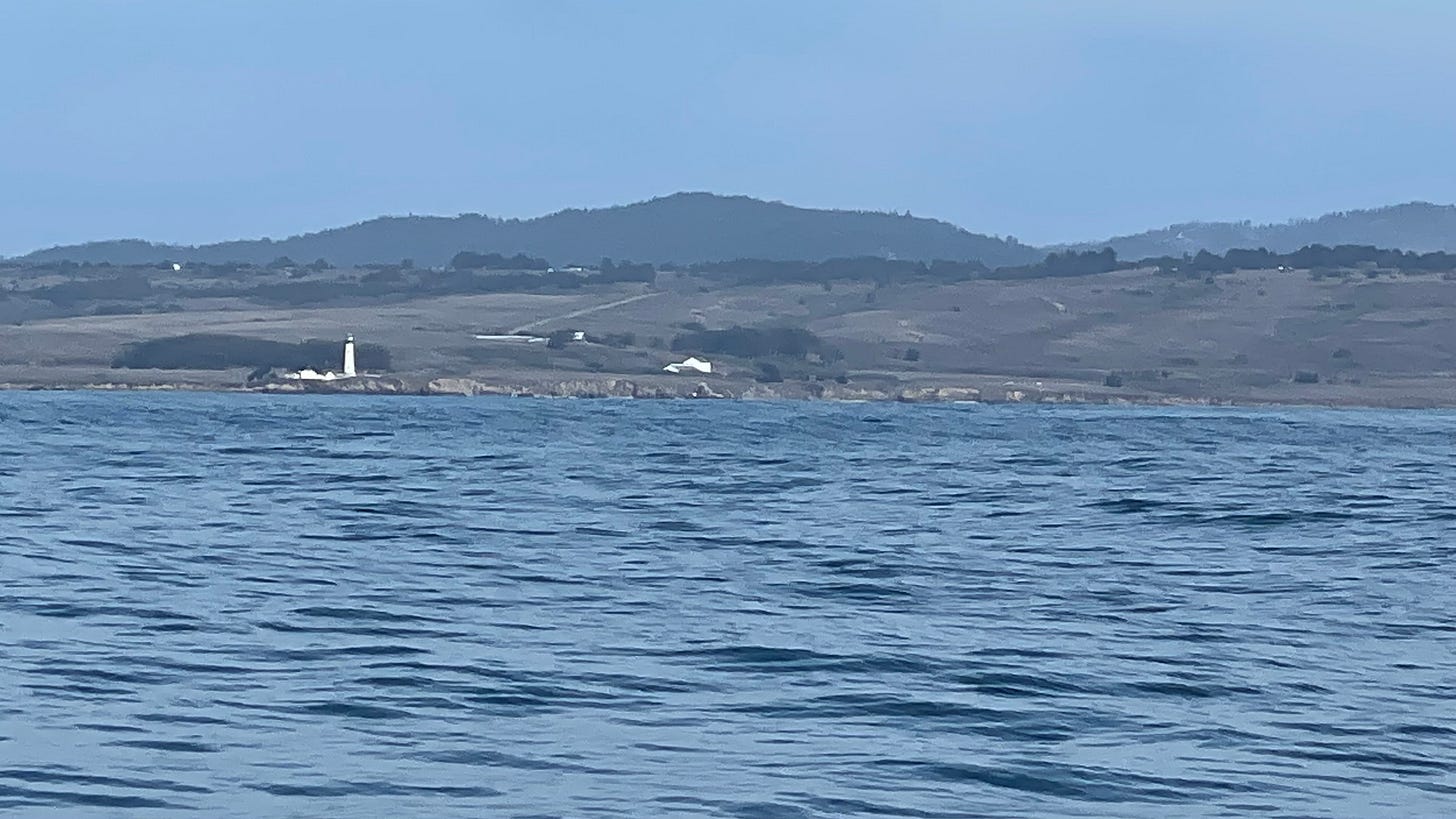
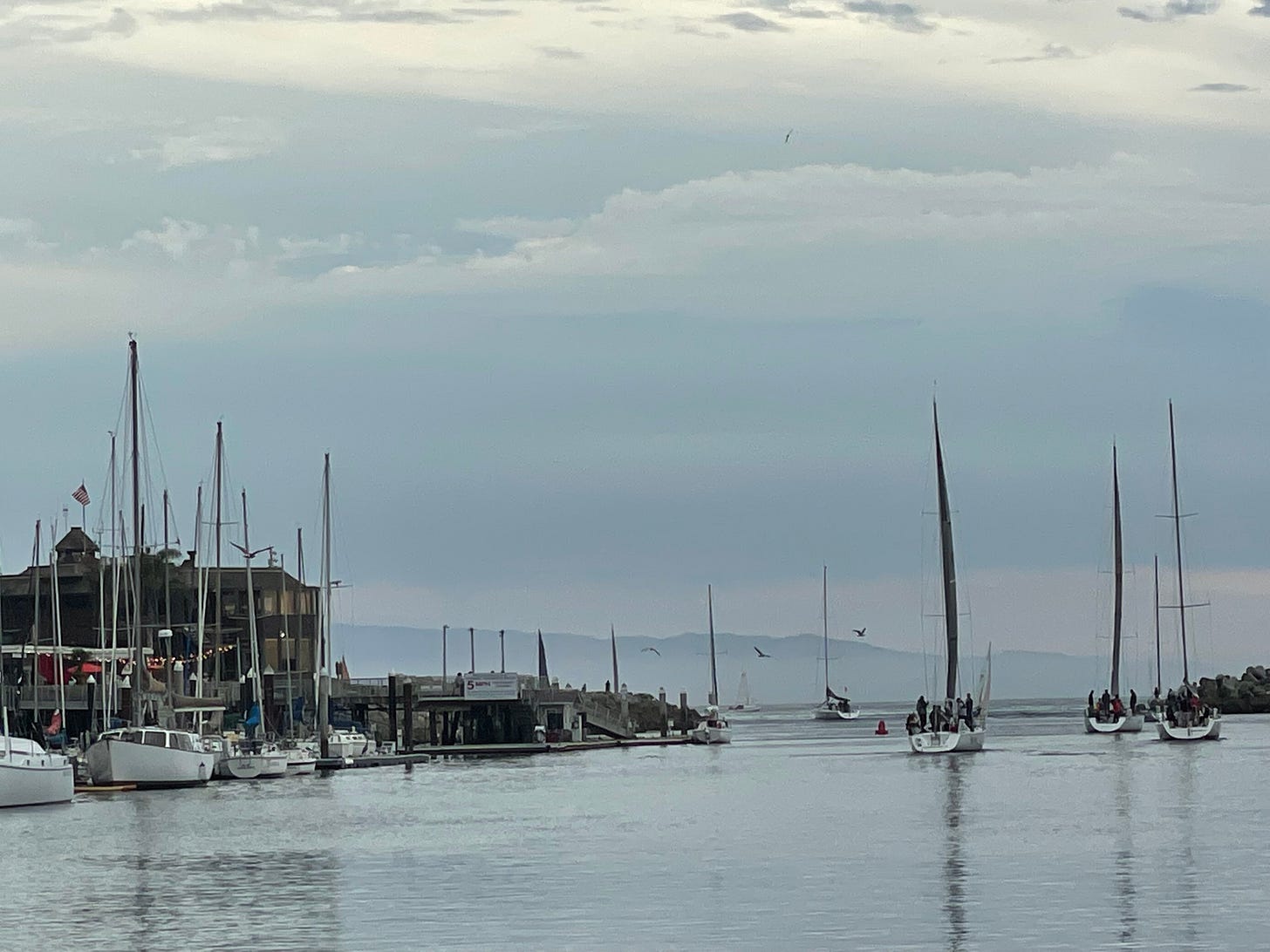
Wonderful summary, Donna. Your writing really put me "on the boat."
Very nice to follow along with you and Peter